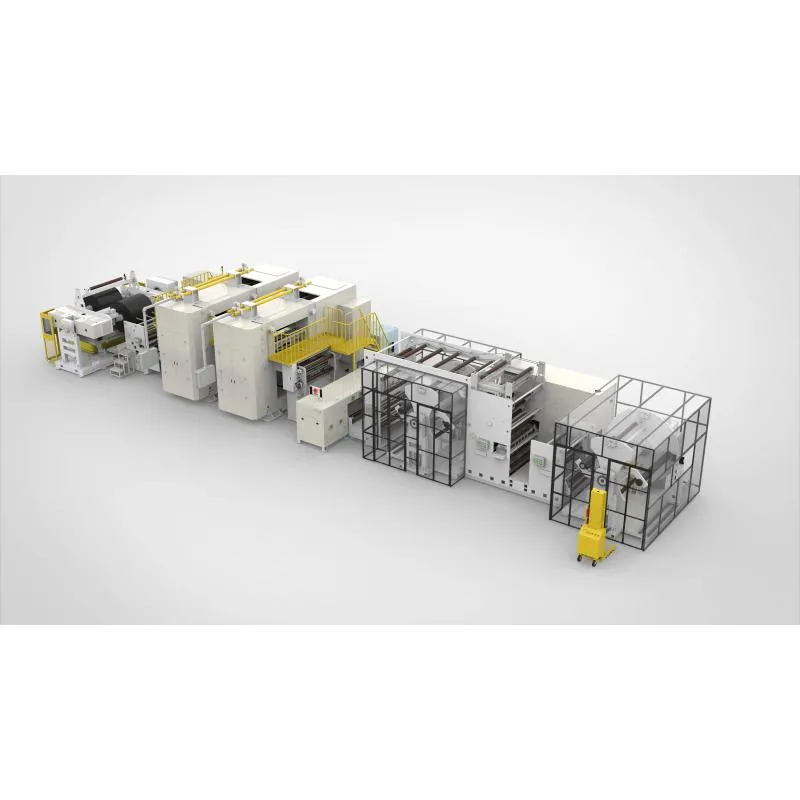Lithium Ion Battery Assembly Machine | High-Speed, Automated
Inside the new wave of battery factories: an integrated lithium ion battery assembly machine that actually changes the math
If you’ve toured a modern gigafactory lately, you’ve probably noticed the same thing I did: the real bottleneck isn’t people, it’s how many times material moves between separate machines. That’s why this 900×1500 Negative Electrode Double‑Machine Continuous Rolling Automatic Splicing Turret Slitting Integrated Machine from Xiangdu, Xingtai (yes, the address is Room 1410, No. 119 Zhongxing East Street) has been getting whisper-level attention. It’s a mouthful, but the idea is simple—roll press, splice, and slit negative electrode material in one continuous line. Fewer handoffs, fewer headaches.

Industry snapshot
Electrode throughput is scaling faster than coating lines alone can manage. The trend now: integrated stations that close-loop thickness, splice on the fly, and deliver slit rolls ready for cell assembly. In fact, many customers say they only realized how much yield they were losing during reel changes after installing in-line data logging. It seems that fully integrated equipment is becoming a quiet standard for EV, energy storage, and high-end consumer cells.
What this integrated line does
Core functions in one frame: continuous rolling (double-machine press), automatic splicing, turret slitting. It’s built for wide-width negative electrode (graphite on Cu foil), and—importantly—tracks burr and edge quality without stopping. Compared with a traditional setup, the lithium ion battery assembly machine reduces WIP, operator touches, and alignment drift between processes.
Typical specification (project-configurable)
| Model purpose | Integrated negative electrode production (roll press + auto splice + turret slitting) |
| Compatible substrate | Cu foil with graphite-based anode coating |
| Max coating width | ≈900 mm (project-specific) |
| Parent roll OD | ≈1500 mm (typical), real-world use may vary |
| Line speed | Around 30–80 m/min (depends on material/quality targets) |
| Thickness uniformity (post-press) | ≤±2–3 μm typical (with closed-loop control) |
| Burr after slitting | ≤10–20 μm typical, depending on foil and blade condition |
| Service life | Designed for 8–12 years with preventive maintenance |
Process flow and controls
Materials: graphite-coated Cu foil (6–12 μm foil typical). Methods: double-station roll pressing for density tuning; automatic tail-to-head splicing with tension control; turret slitting with servo-guided edge tracking. Testing: in-line laser thickness gauges; edge burr inspection; 180° peel adhesion checks (per ASTM D903) offline; traceability logs for reel ID and parameter sets. Standards alignment includes ISO 12100 machine safety and ISO 13849-1 for control systems; battery quality targets reference IEC 62619 and, for EV programs, UL 2580 guidelines.
Where it fits
- EV and e-mobility cells (high throughput, strict burr limits)
- Energy storage systems (long-life anodes, stable density)
- Consumer electronics (tight width tolerance, frequent product changeovers)
Vendor comparison (summary)
| Vendor/Line Type | Integration | Changeover | Typical CapEx | Notes |
|---|---|---|---|---|
| XT Shuoding 900×1500 Integrated | Press + splice + turret slit in one | Fast; fewer interconnects | Mid | Lower WIP, single HMI, local support in Hebei |
| Generic standalone press + slitter | Separate machines | Slower; more setups | Low–Mid | Higher handling loss; more floor space |
| European modular integrated line | Fully integrated | Strong; recipe libraries | High | Premium options; longer lead times |
Customization, service, and real feedback
Options I’ve seen requested: camera-based edge analytics, auto-knife positioning, extra dust extraction, MES connectors, and recipe locking for GMP-style governance. Many customers say the biggest surprise was fewer splice-related defects after automatic tension tuning. A Tier-2 ESS maker reported a ≈1.2% yield uptick over six weeks (small, but meaningful). Service teams out of Xingtai handle commissioning; spare kits and blade programs matter—don’t skimp.

Quality gates and data
- Thickness control via laser micrometers; Cp/Cpk tracked per product code
- Slit width tolerance: typically ±0.05–0.10 mm; burr logged by lot
- Adhesion and density audits per SOP; traceability to coil ID and parameters
- Equipment OEE reporting aligned with SEMI E10 terminology
To be honest, no single lithium ion battery assembly machine solves everything. But when you bring splicing, pressing, and slitting under one roof, small efficiencies stack up. That’s usually what wins budgets.
Authoritative citations
- IEC 62619: Secondary lithium cells and batteries for industrial applications — https://webstore.iec.ch
- ISO 12100: Safety of machinery — General principles — https://www.iso.org/standard/51528.html
- ISO 13849-1: Safety-related parts of control systems — https://www.iso.org/standard/69883.html
- SEMI E10: Specification for Definition and Measurement of Equipment Reliability — https://www.semi.org
- ASTM D903: Standard Test Method for Peel or Stripping Strength — https://www.astm.org/d0903
- UL 2580: Batteries for Use In Electric Vehicles — https://www.ul.com
Share
-
Lithium Battery Welding Machine | High-Precision, Fast, SafeNewsNov.17,2025
-
Aluminium Guide Roller | Anodized, Lightweight, Low-NoiseNewsNov.17,2025
-
Tofu Cat Litter Bulk – Eco, Low-Dust, Fast Clumping SupplyNewsNov.17,2025
-
Equipment for Lithium Cell Assembly | Automated & PreciseNewsNov.10,2025
-
Square File Tool – Precision Cut, Hardened Steel, VersatileNewsNov.10,2025
-
Lithium Ion Battery Assembly Machine | Automated, High-SpeedNewsNov.10,2025







